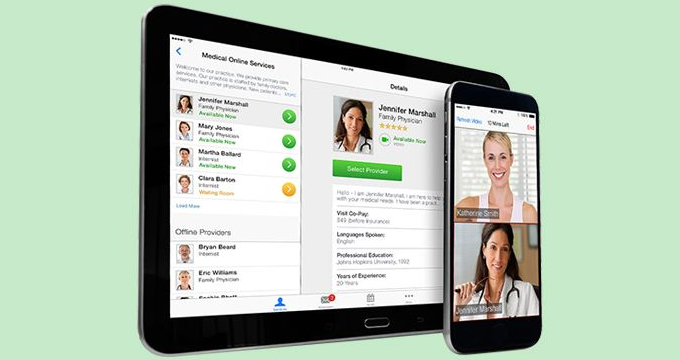Telemedicine is inarguably the next big thing in healthcare as it helps to fill the numerous gaps in the way we receive and deliver medical services. In 2020, the market for telemedicine has reached $31,46 billion making it an immensely attractive field for investment. Yet, when it comes to creating telemedicine solutions, there are lots of nuances and intricacies. In this article, we will talk about things you need to take into account while building telemedicine apps.
Read also: How Automation And IoT Are Transforming Healthcare
Know Your Competitors
Delivering urgent healthcare, reducing travel time and expenses, facilitating healthcare management, and helping doctors reach an optimal work-life balance are just some of the examples of how both patients and physicians benefit from telemedicine. If you want to tap into this niche, it makes perfect sense to learn all you can about your competitors. Here are some of the popular telemedicine mobile apps for your consideration.
1. DoctorOnDemand is a telemedicine platform connecting patients with over 1,400 certified healthcare professionals. Using the app’s powerful search system, patients can detect the right physicians, schedule and hold video meetings, process payments, locate pharmacies where they can buy prescribed medications, and more.
2. Pager, a care coordination app, guides patients through the entire course of getting medical help – from talking to a nurse and scheduling appointments to arranging transportation to a healthcare facility (if necessary). Lab test management, access to patients’ insurance info, and electronic health records are other features of the Pager app.
3. ZocDoc, a widely popular app with over 6 million users across the US. The app matches patients with doctors that take their insurance and connects them through secure video conferencing. ZocDoc also enables patients to view doctors’ ratings and leave testimonials.
Apart from convenient UI and great user experience, the set of features that you provide to doctors and patients can become your competitive advantage.
Typical telemedicine app features for patients:
– Patients’ profiles with access to prescriptions and medical records
– Social media sign up
– Search (including search filters)
– Appointment scheduling
– Remote consultations
– Payment processing
– Promotions and referrals
– Ratings and testimonials
Typical app features for doctors:
– Doctors’ profiles
– Appointment management
– Scheduling tools
– Access to electronic health records
– Electronic prescriptions
Envisioning your user journey will help you decide on your optimal set of app features. After your users download and install your app, what will be their next step? Setting up a profile, enter their symptoms, or using geolocation data to detect healthcare professionals in the nearby area?
Read also: Big Data In Healthcare: Applications And Challenges
Here at VARTEQ, these are the type of questions that we usually ask at the discovery phase of every software development lifecycle. As you complete this phase, you should assemble a set of specifications and requirements that will assist you in the app development process.
Things to Consider Before Starting Telemedicine App Development
If you’re thinking about entering the market for doctor-on-demand solutions, there are some more things you should take into account.
1. Your target audience
Before you start, think about who will be using your app. Consider their location, income, and other demographics. Preferably, do so before you envision your user journey.
2. Database of trusted healthcare professionals
Telemedicine applications should feature an extensive doctors’ database. Make sure the list of doctors in your app includes only licensed and certified professionals.
3. Compliances and regulations
As an industry, healthcare is bound by a plethora of restrictions and acts that differ depending on a country or state. The telemedicine app you build should comply with all of these regulations and standards.
4. Revenue model
How do you expect your app to drive revenue is another important thing to consider before envisioning the user journey. Will you charge royalty from each payment transaction? Will doctors pay to be featured in your app? Will you make money from in-app advertising? All of the above? Make sure to provide clear answers to these questions.
5. Development expenses
Last but not least – how big is your development budget? As you invest in telemedicine app development, you will need to strike a delicate balance between cost and quality.
Surely, a lot will depend on your choice of a software development partner. It’s not only about the clean code – a reliable company experienced in building software solutions for healthcare will also ensure that your app is regularly updated, will integrate with emerging technologies like VR and blockchain, and survive the impending advent of 5G. On top of that, a good tech partner will help you achieve faster time-to-value.
At VARTEQ, we will guide you through the crucial discovery phase of the telemedicine application development and help you write clear and comprehensive product specifications.
Read also: Using Modern Software Solutions To Run A Med Lab
Have questions? Let’s talk! Contact us now for a free consultation!

